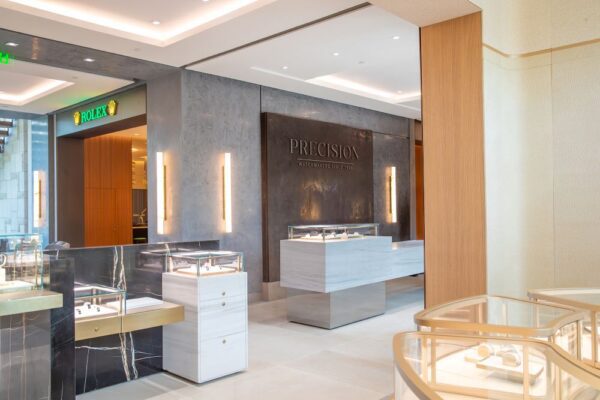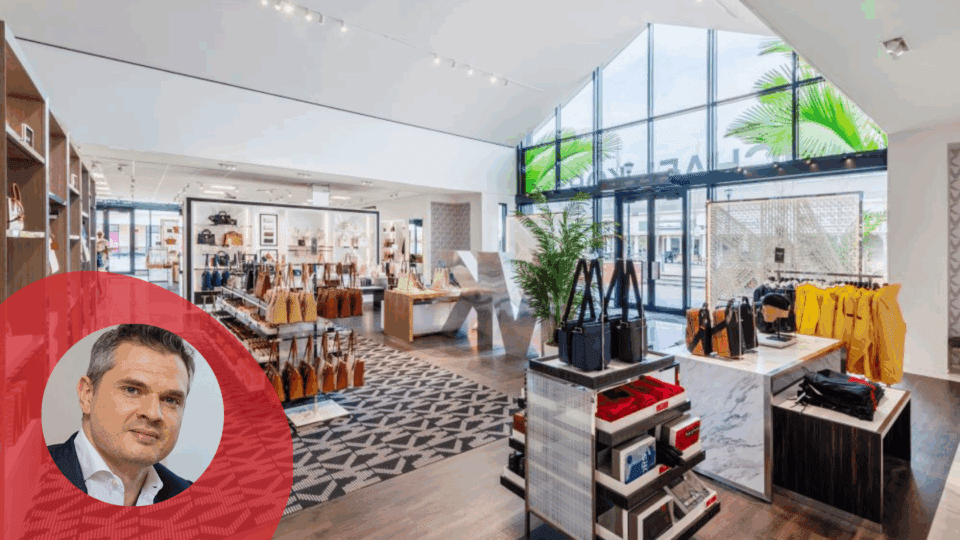Top luxury brands burnish their images by opening stimulating and inventive in-person settings for high-end shopping corridors like New York’s Madison Avenue, Beverly Hills’ Rodeo Drive and Miami’s Design District. While it is essential to be located in these popular districts frequented by guests of all kinds, major labels often make a bigger statement when they establish venues in the tonier outlying communities that ring those major cities, often in freestanding, purpose-built retail structures.
With the luxury sector as competitive as it has ever been, the key to differentiating is making the brick-and-mortar venue a destination in itself. A memorable, one-of-a-kind experience composed of evocative architectural gestures and artisanal elements, as well as features that guests are captivated by and want to revisit, is one that they will also share with friends and followers through social media and word of mouth. The results are in-store experiences that offer both retailing advantages and an edge in fostering brand loyalty.
Big brands need that presence in prestigious urban shopping meccas, yet the premiere lifestyle centers and retail corridors along the peripheries — where a receptive demographic craves beautiful luxury destinations and uniquely crafted offerings — have their own appeal. The luxury freestanding retail venue is on the rise. The clientele for high-end products and services appreciate having luxe experiences available closer to home.
The Luxury Brand ‘Mansion‘
The freestanding luxury retail venue concept can be approached in multiple models to create thriving store locations with varied parking formats. Some brands establish a significant presence of their own, while others set up shop within boutique plaza venues or “mansions.” Designed to house multiple boutique offerings, these create a luxury magnet combining the world-class appeal of top brands.
This model is how our firm designed the just-opened Precision Watches, integrating brand displays with everything from the stately façade, elegant interiors and lush landscaping in a unified concept for a one-of-a-kind experience for watch enthusiasts. Created for owner Roman Murat, the freestanding two-story experience sits on a busy corridor of the Pennsylvania township and equestrian community of Lower Gwynedd, not far from Philadelphia. Combining retail space and headquarters, Precision brings together luxury timepiece purveyors Cartier, Rolex, Omega and Tudor in a stunning two-level setting full of daylight, comfortable seating and sparkling, precision-engineered displays.

Alternatively, the single-brand model is essentially a regional or national flagship devoted to the worshipers of the luxury house. Our design of a new ground-up building for Michael Kors, for example, expanded their presence at Woodbury Commons, about 50 miles north of New York City. The concept for the building, façade design and interior fit-out of the 12,000-square-foot pavilion welcomes shoppers with large glass openings and distilled forms, including a commanding pediment and prominent dormers.
Keys to Great Design
For those luxury goods makers considering a new freestanding retail venue, the insights below are drawn from our firm’s experience.
Location, location, location. Determining where to build should start with a study of area demographics and visibility to ensure the site supports brand goals. For some, a new building’s primary function may be to serve as an iconic architectural statement that leverages proximity to a busy traffic corridor for brand visibility, while others may want the venue to serve as a headquarters with corporate offices, with the retail experience as an additional, even secondary component. Those that definitely want foot traffic to buttress sales goals will favor an easy-to-access site on a well-known corridor in an affluent area. The venue for Precision Watches, mentioned earlier, combines all of these: a retail multi-boutique mansion with headquarters offices on a mezzanine level, it’s both highly visible and easily accessible at a major four-way intersection.
Form follows function. Next, outline a program that serves the brand vision and strategic goals. Start by getting clarity on the kind of spaces you’ll need for functionality, and then let the design solutions emerge. This is a special opportunity for the architect to approach the building design from within, starting with needed functions and well-defined spaces that support the program, which in turn determines the interior proportions.
The building shape should emerge organically from these discoveries. Lot lines and parking needs will likewise inform the outcome, and while properties with irregular shapes and unexpected adjacencies may present challenges, they also create opportunities for unique, highly recognizable building profiles. Then, leveraging precision engineering and shop-fabricated component systems for the façade, core and shell, the architect can deftly execute a design that unifies the exterior and interior thoughtfully and gracefully within the brand vision.
Leverage shop-fabricated systems. Retailers in the luxury sector require guaranteed results of superlative quality. Embracing a state-of-the-art process for design and construction takes the unpredictability out of the equation. Our team encourages our luxury brand clients to embrace a digitally-assisted process combined with precision-engineered, prefabricated and component-based systems, which can be applied to enhance rather than detract from craft and fine materials.
This was our approach for both Precision Watches and the Michael Kors flagship mentioned above: pre-ordered structural framing, façade and glazing systems as well as finely detailed architectural and display fixtures all arrive on-site as a kit, ready to be assembled and keep the project on track for a promised opening date. However, as a counterpoint to machine-made perfection, artisanal touches often do need to be applied in the field by a skilled artist.
The brand as experience. To emerge as destinations for guests, luxury retail venues must offer memorable, one-of-a-kind experiences to distinguish each as a must-visit location. The design should translate the brand itself into architecture, with the entire guest experience, start to finish, informed by the brand vision. Additionally, the programming and amenities should make it easier for sales associates to anticipate guest needs, combined with seamlessly integrated lighting and audio-visual elements for a curated vibe.
We recommend that designers work closely with the brand to tell their story in a way that produces a compelling experience, infused with moments of wonder. “Instagram-able” settings that photograph well for sharing on social channels can be valuable for generating online buzz, but these are secondary to developing stunning elements that contribute to an overall experience that guests cannot help but remember. Those compelling, unforgettable aspects elevate the freestanding location from a stop along the way to a must-visit destination — even a shopping ritual.
Alexander Zilberman, AIA is founder and principal architect of Alexander Zilberman Architecture PC (AZA), a globally active studio working on residential, high-end retail, hospitality and workplace projects, among others. As an architect, artist and designer, he translates brand identity and experience into architectural solutions that reflect a focus on craft, technology and detail. Zilberman’s work with well-known brands such as Versace, Michael Kors and Aston Martin can be seen from New York to Savannah, Palm Beach and Dubai.








